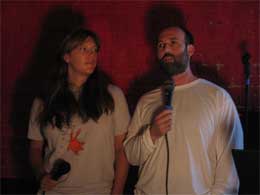 Sometimes you’d go to a conference to listen to someone whose work you admire and the experience turns out to be quite disappointing.
Sometimes you’d go to a conference to listen to someone whose work you admire and the experience turns out to be quite disappointing.
But once in a blue moon, you listen to someone else’s words and feel like you’re falling in love. That’s what i experienced a week ago when i heard Sara and Marc Schiller from Wooster Collective talk at the Conflux festival in Brooklyn. I’ve been following their blog for two years now and it was great to finally get to know who and what’s behind one of the best site that documents and celebrates ephemeral art placed on streets in cities around the world.
The title of their talk was “What is it about street art that inspires us?” What inspires them has no particular set of rules nor well-defined criteria, it’s an “emotional thing.” The talk tried to break down the DNA of street art, without pretending to be a dogma or a text book, it’s just the gathering of their thinking of two persons who’ve been following and documenting very closely the street art scene since 2001.
Street art, 3 critical ingredients:
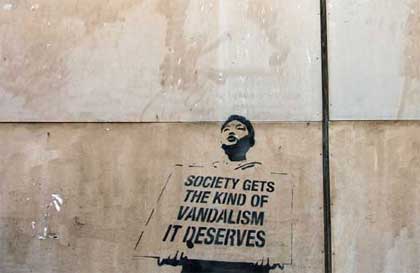
1. Location, location, location! It has to be illegal. A work of street art reclaims the public space and the best street art has a context, builds a relationship with its environment, dialogs with the city. Most of the artists document their work on the web. It doesn’t mean that street art is meant to be seen on the web. The art has to be left in the street where it might stay for months or just half an hour. Most of the pieces are one-off.
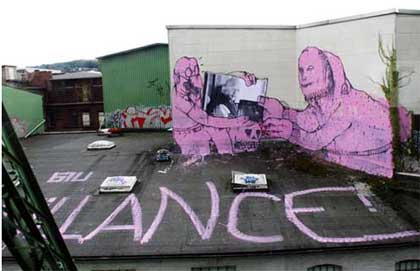
Examples: Italian artist Blu as seen in the image above, a collaboration with JR…
or the awesome graffiti of Ghent-based artists Cum.
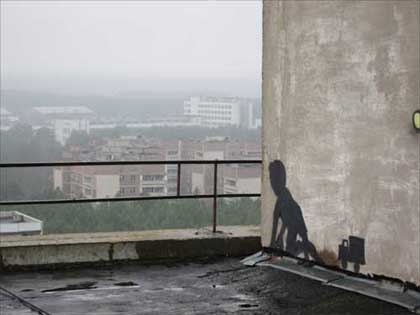
For two days in October, 2005, a group of Belarusians and Germans took a trip to Pripyat, an abandonned city that used to be home to the Chernobyl Nuclear Power Plant workers. Since Chernobylinterinform was under-staffed that day, the group was accompanied by an inexperienced zone worker. When it was time for lunch, they said they weren’t hungry but told their escort that she could go back to the town of Chernobyl to eat. Unaccompanied, they were free to populate the ghost city with their graffiti. The style of the works totally fits the eeriness of the abandonned city.
These works are not about vandalism but about beauty.
2. Surprise and delight: the works tap into our emotions and we get that WTF ??? moment. The web cannot recreate that experience but it’s still important to document the works on the internet because not everybody gets the opportunity to see one of Banksy’s works. Besides, half of the passersby might walk by the work and totally ignore it. Creating surprise and delight doesn’t require a particular skill or training, it’s more a matter of ingenuity and brillance.
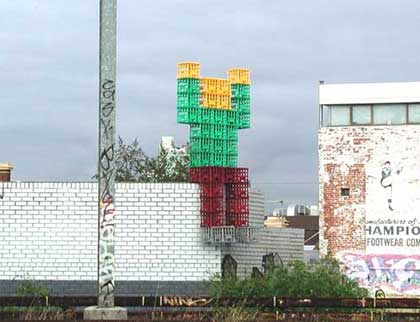
Examples: the “Crate Man” in Melbourne.
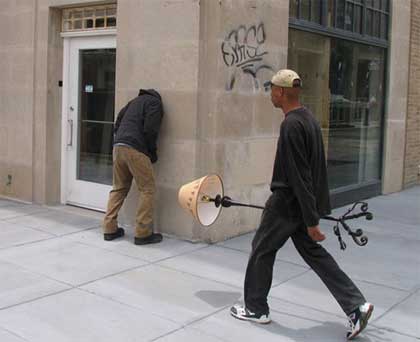
or the “embeds” series by tape artist Mark Jenkins.
3. Have something to say: a statement on how you see the world, the best pieces do not necessarily make a strong political statement but they will make you see the city under a different light. Artists let passersby make their own interpretation of the work. Half the people pass by and might never see it though.
Examples: Street urinals from hekon2 in Italy
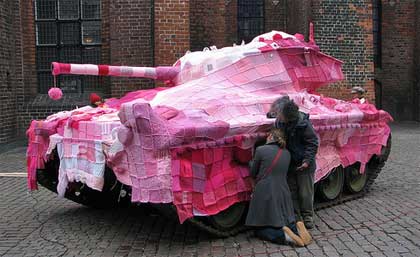
A knitted, pink cosy for a tank of the Danish Army. Knitted by Marianne Joergensen plus some 1000 volunteers.
4. Personal and intimate, the pieces are very subjective.
It takes time, commitment and money to craft works (most of the pices are hand-made and one-offs) that might disappear nearly as soon as they have been left in public space, street art can therefore hardly be regarded as vandalism. Once you leave a piece in the streets, you don’t own it any more and have no control over it, it belongs to the street. Besides all the pieces change over time, because of the elements and the weather. But that’s part of the eco-system!
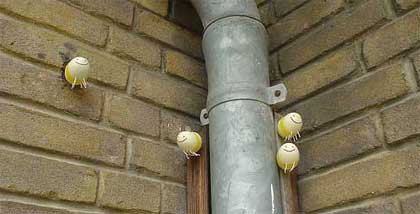
Examples: littles bees in a backyard in Amsterdam.







